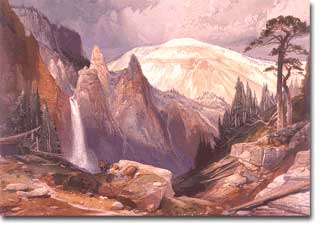
43. Progressives in the White House

Hiding Teddy
Theodore Roosevelt was never intended to be President. He was seen as a reckless cowboy by many in the Republican Party leadership. As his popularity soared, he became more and more of a threat. His success with the Rough Riders in Cuba made him a war hero in the eyes of many Americans. Riding this wave, he was elected as governor of New York.
During the campaign of 1900, it was decided that nominating Roosevelt for the Vice-Presidency would serve two purposes. First, his popularity would surely help President McKinley's reelection bid. Second, moving him to the Vice-Presidency might decrease his power.
Vice-Presidents had gone on to the White House only if the sitting President died in office. The last Vice-President elected in his own right had been Martin Van Buren in 1837. Many believed Roosevelt could do less harm as Vice-President than as governor of New York.
McKinley and Roosevelt won the election, and all was proceeding according to plan until an assassin's bullet ended McKinley's life in September 1901.
The Bully Pulpit
Roosevelt did not wait long to act. Before long he lashed out against the trusts and sided with American labor. The Pure Food and Drug Act and the Meat Inspection Act protected consumers. Steps were taken to protect America's wilderness lands that went beyond any previous President.
The worst fears of conservatives were realized as Roosevelt used the White House as a "bully pulpit" to promote an active government that protected the interests of the people over big business. The Progressive movement finally had an ally in the White House.

The Progressive lock on the Presidency did not end with Theodore Roosevelt. His popularity secured the election in 1908 of his hand-picked successor, William Howard Taft. Although Taft continued busting America's trusts, his inability to control the conservative wing of the party led to a Republican versus Republican war.
A Progressive Democrat
Teddy Roosevelt challenged Taft for the Republican nomination in 1912, splitting the party wide open. Although the Republicans lost the election, it was not necessarily a loss for Progressives. The winning Democrat, Woodrow Wilson, embraced much of the Progressive agenda himself.
Before his two terms came to a close, the federal government passed legislation further restricting trusts, banning child labor, and requiring worker compensation. The Progressive causes of temperance and women's suffrage were embedded into the Constitution.
Between 1901 and 1921, the Presidents were more active and powerful than any since the days of Abraham Lincoln.





